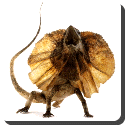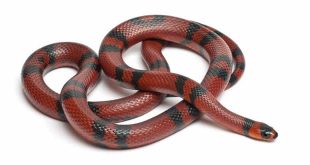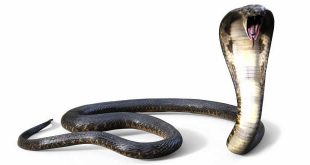 Australian Frilled Lizard — The Frill-necked Lizard, or Frilled Lizard also known as the Frilled Dragon, (Chlamydosaurus kingii) is so called because of the large ruff of skin which usually lies folded back against its head and neck. The neck frill is supported by long spines of cartilage, and when the lizard is frightened, it gapes its mouth showing a bright pink or yellow lining, and the frill flares out, displaying bright orange and red scales. The frill may also aid in thermoregulation.
Australian Frilled Lizard — The Frill-necked Lizard, or Frilled Lizard also known as the Frilled Dragon, (Chlamydosaurus kingii) is so called because of the large ruff of skin which usually lies folded back against its head and neck. The neck frill is supported by long spines of cartilage, and when the lizard is frightened, it gapes its mouth showing a bright pink or yellow lining, and the frill flares out, displaying bright orange and red scales. The frill may also aid in thermoregulation.
Adult frill-necked lizards may grow up to one metre in total length. They often walk quadrupedally when on the ground. When frightened they begin to run on all-fours and then accelerate onto the hind-legs. In Australia, the frill-necked lizard is also known as the “bicycle lizard” because of this behaviour. Males are significantly larger than females both as juveniles and when mature. The frill of the Australian frilled dragon is used to scare off potential predators — as well as hissing and lunging. If this fails to ward off the threat, the lizard flees bipedally to a nearby tree where it climbs to the top and relies on camouflage to keep it hidden.
The lizard is found in southern New Guinea, as well as in the Kimberley region of Western Australia and across northern Australia. It primarily inhabits savanna woodlands, but may also be found in tropical to warm temperate forests, and where there is an open scrub or tussock grass understorey. It is semi-arboreal, and hunts in the trees for small arthropods (including caterpillars and cicadas), and on the ground for ants and termites, spiders, or small vertebrates (e.g. other lizards). The lizards are less active during the dry season (April-August)
Frill-necked lizards breed in the early wet season from September to October. Adult males fight for mates, displaying their frills and biting each other. One to two clutches of 8-23 eggs are laid from early to mid-wet season from November to February. The eggs are laid in a nest 5-20 cm below ground, and usually in sunny areas. Incubation takes two to three months. Sex is partly temperature determined, with extreme temperatures producing exclusively females, and intermediate temperatures (29-35C) producing equal numbers of males and females. Their eggs are soft-shelled.
 Kids Portal For Parents India Kids Network
Kids Portal For Parents India Kids Network


